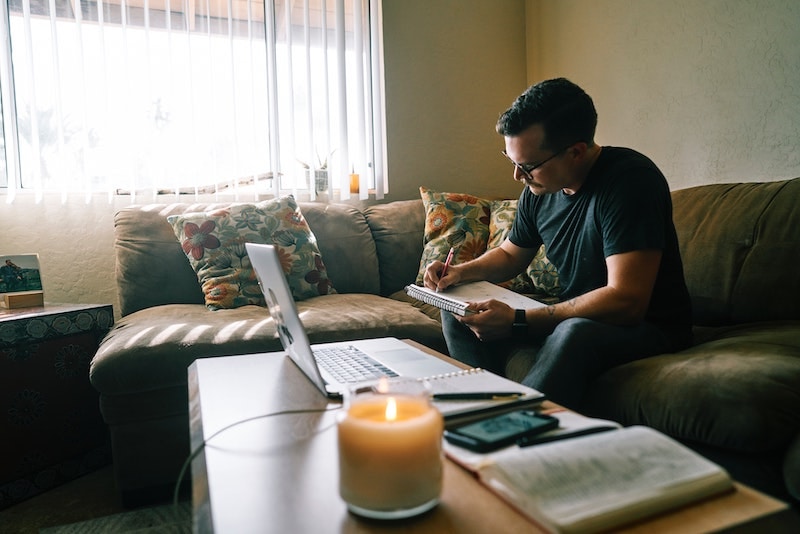Online teaching veteran, Avi Cohen, on what a good online course looks like and how to build it

For some instructors, teaching online is an intimidating, foreign idea. But for award-winning professor Avi Cohen, it is a familiar skill he has crafted over the years.
With an eCampus Ontario grant, in 2016 he created an online version of his introductory economics course for 300 students at the University of Toronto. This Fall, with Professor Gordana Colby, they moved online a massive York University introductory economics course, with almost 3000 students. The radically transformed online course has increased student engagement, student participation, and instructor involvement.
With his extensive online teaching experience, including using student surveys to modify courses, Avi Cohen shares his experience for teaching online and creating an effective online course.
(These responses have been edited for brevity and clarity.)
Tell us a little bit about your experience with moving your 500-person introductory economics course online.
At York University, before we moved online, our economics introductory course had 8 sections, each with 400-500 students. The 8 section instructors would each repeat essentially the same information in lecture halls where maybe 150-200 students would show up.
In the restructured online course, there are asynchronous recorded online lectures, which are very sophisticated (small chunked videos, high production values, embedded knowledge check questions, targeted visual and auditory feedback) and delivered by an award-winning teacher. Although Professor Colby and I both have had online training and experience, restructuring the course still took 6 months of collaboration, time, and planning, involving 8 instructors. In our case, the student experience online has been far superior than a face-to-face experience sitting anxiously and feeling alone in a 500-person lecture hall.
How do you drive participation, student engagement, and bridge the screen gap?
The knowledge check questions that intersperse the asynchronous videos promote active recall, which is what all the current cognitive psychologists say is the best for learning. Another advantage is that instructors no longer have to deliver the same material over and over again. Now, instructors divide their section into 3 smaller seminars, and the professors engage in smaller group teaching, all devoted to Socratic-style active learning.
Previously, our discussion boards were staffed by TA’s, many of whom are international students whose first language is not English. There were also limited TA hours due to budgetary constraints. Now, the professors themselves are actually the ones responding to discussion questions and comments. This is a level of interaction that did not exist before in the traditional face-to-face model.
There has been a lot of criticism with the student experience with online learning. What are your thoughts on them?
When universities went online in March [2020], there was a lot of criticism around the student experience. There was an editorial in a national newspaper which said that online learning is a pale reflection of the real thing. When COVID struck, most instructors didn’t have training in online learning. I would call what happened then emergency remote teaching: when people take what they do in a classroom and just try to push it online. Instead of standing in front of a lecture hall, instructors stood (or sat) in front of a Zoom camera. There was no fundamental restructuring of the course to take advantage of the real opportunities online learning presents.
I disagree with the generalization that online learning is worse than face-to-face. It might be true for smaller seminars, but it’s not necessarily true for large classes. Large lecture halls—no matter how good the professor is—can be very alienating for students. They’re afraid to ask questions. There’s very little interaction. And that’s the core of their weekly experience. In an online course that’s been properly developed, you can have much more involvement, much more learner-centered activities than you can in a traditional lecture hall.
What does building a good online course require?
A good online course can take up to 6-12 months to create. You have to first decide on your course learning objectives. Then, using the backward design process go back and ask:
- What are the activities that will help students accomplish those objectives?
- What kinds of assessments will test those specific objectives?
- How to incorporate the technology?
- How to promote student engagement?
It’s a very complex process but when done well, the student can have a really great learning experience.
Watch the full conversation here:
 Play
Play

Avi J. Cohen is University Professor of Economics at York University and at the University of Toronto. He has a PhD in Economics from Stanford University; is a Life Fellow of Clare Hall, University of Cambridge; is past President of the History of Economics Society; and a former Senior Research Fellow at the Center for the History of Political Economy at Duke University. Professor Cohen is also the winner of numerous teaching awards, including the 3M Teaching Fellowship, Canada’s most prestigious national award for educational leadership.
Professor Cohen was an early adopter of technologies. In 2004 he created a 10-week faculty development course called do TEL (Technology Enhanced Learning), training instructors interested in transforming traditional courses into blended and online formats. He is a long-time creator of educational materials. His Microeconomics for Life / Macroeconomics for Life textbooks are entering their third edition in Canada.